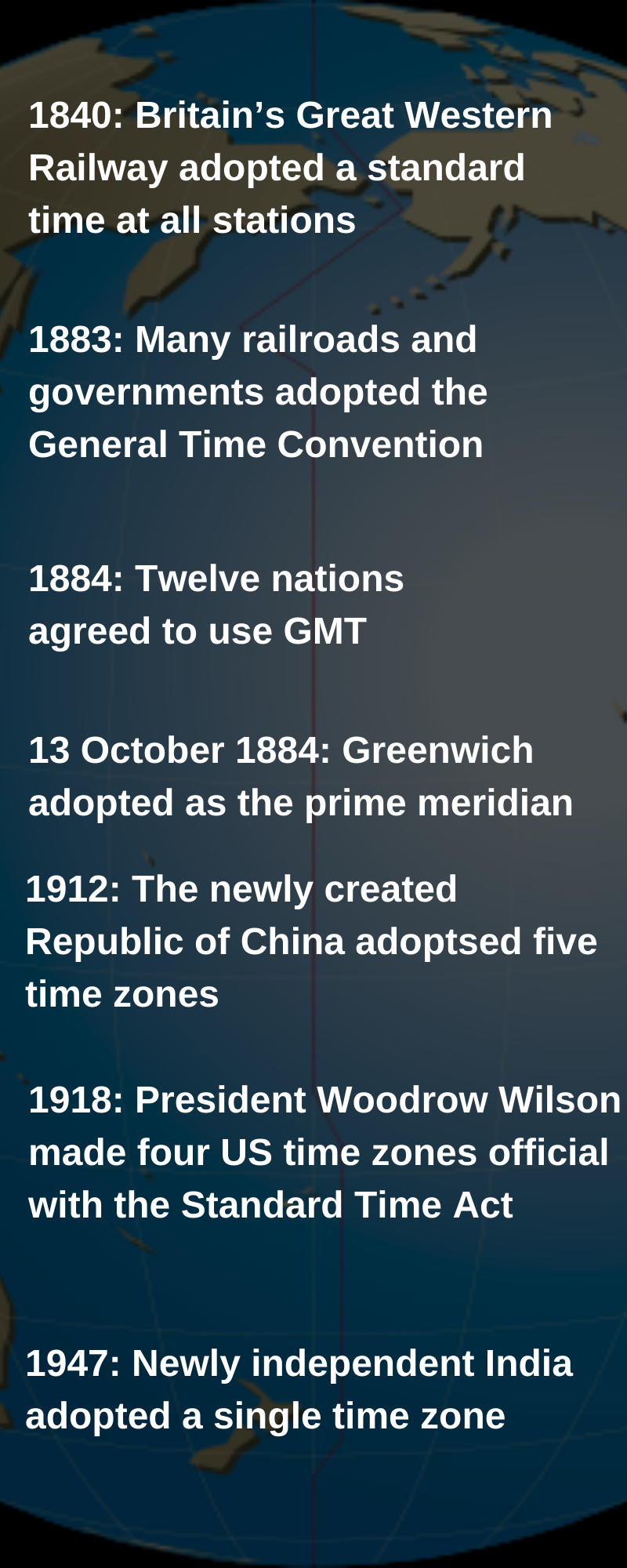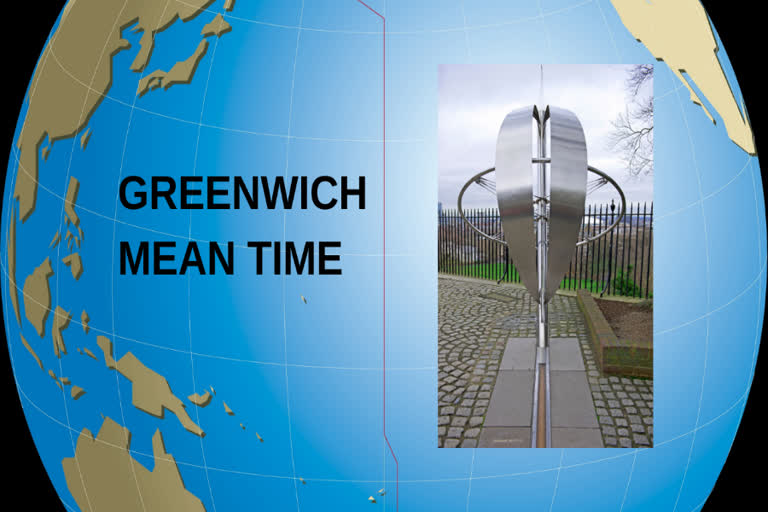Hyderabad: GMT stands for Greenwich Mean Time, the local clock time at Greenwich. From 1884 until 1972, GMT was the international standard of civil time. Though it has now been replaced by Coordinated Universal Time (UTC), GMT is still the legal time in Britain in the winter, used by the Met Office, Royal Navy, and BBC World Service.
How did Greenwich Mean Time begin :
- It wasn’t until the invention of the pendulum clock in the 1650s that it was possible to work out the relationship between mean (clock) time and solar time.
- John Flamsteed came up with the formula for converting solar time to the meantime and published a set of conversion tables in the early 1670s.
- Soon after, he was appointed as the first Astronomer Royal and moved into the new Royal Observatory in Greenwich.
- Here he had the best pendulum clocks installed and set them to the local time.
- This was Greenwich Mean Time or the average time when the Sun crossed the meridian at Greenwich. At first, though, Greenwich time was only really important to astronomers.
How did Greenwich Mean Time become the international standard?

- In 1884 the Greenwich Meridian was recommended as the Prime Meridian of the World. There were two main reasons for this. The first was that the USA had already chosen Greenwich as the basis for its own national time zone system. The second was that in the late 19th century, 72% of the world's commerce depended on sea-charts which used Greenwich as the Prime Meridian.
- The recommendation was based on the argument that naming Greenwich as Longitude 0º would be of advantage to the largest number of people.
- As a reference for GMT, the Prime Meridian at Greenwich, therefore, became the center of world time and the basis for the global system of time zones.
- The Airy Transit Circle (telescope) became the telescope that would define the Prime Meridian of the World. Astronomer Royal George Biddell Airy designed it, and it is located at the Royal Observatory Greenwich.
- It was recommended that the meridian line would indicate 0° longitude. Therefore this also became the start of Universal Day. The meridian line is marked by the cross-hairs in the Airy Transit Circle eyepiece. A history of world time zones:-

- 1949: The new communist government collapsed China’s five-time zones into one.
- 1960: The International Radio Consultative Committee formalized the concept of UTC, with time-synchronized using atomic clocks. (The acronym is a compromise between England and France.)
- 2011: Samoa skipped a Friday in order to switch sides of the International Date Line. Dmitry Medvedev cuts Russia’s time zones from 11 to nine.
- 2014: Vladimir Putin increased Russia’s time zones from nine to 11.
Also Read: Nobel Prizes 2020



